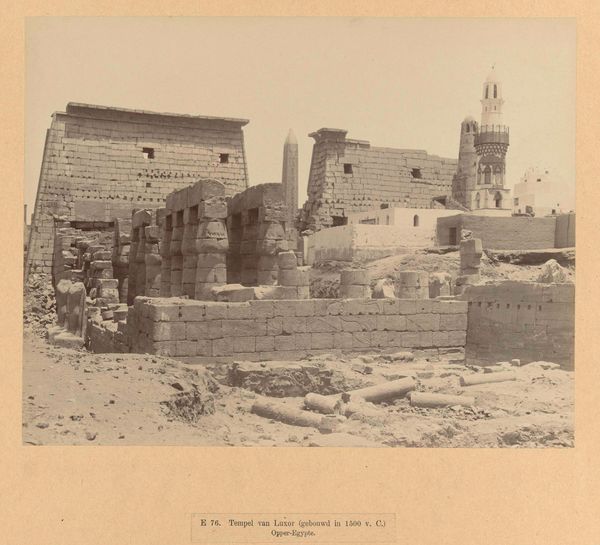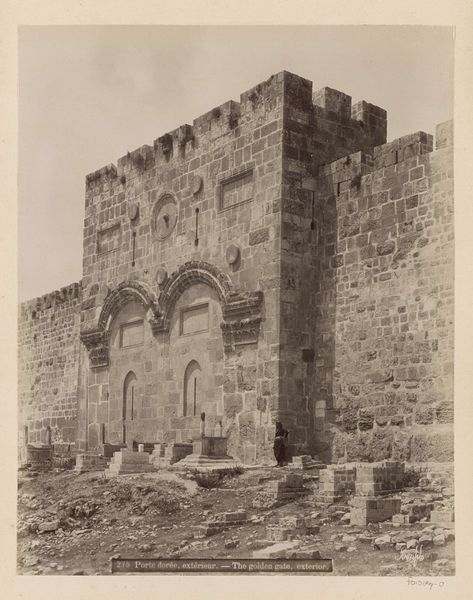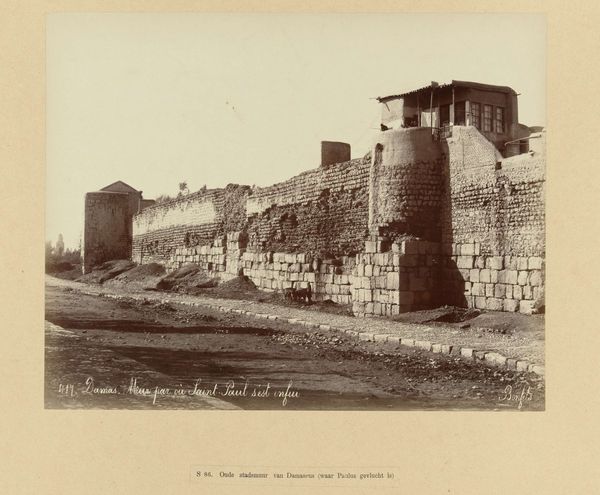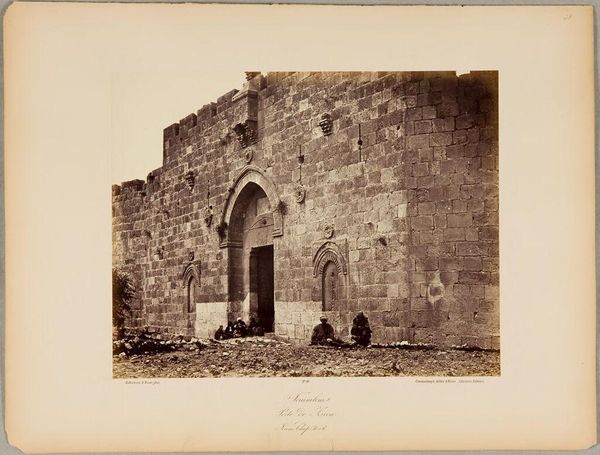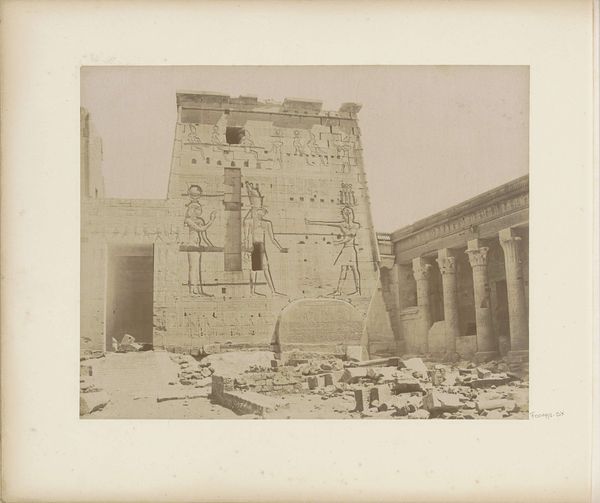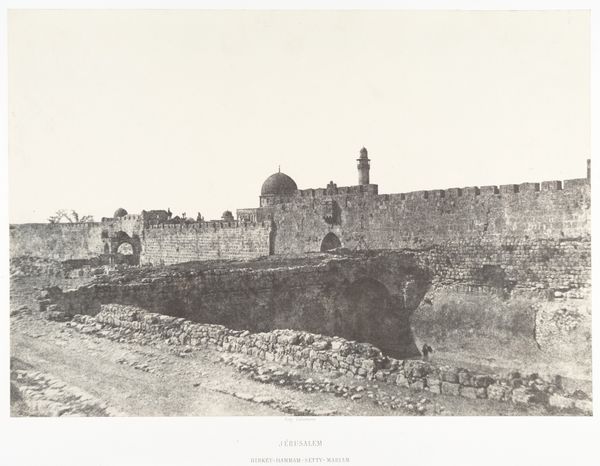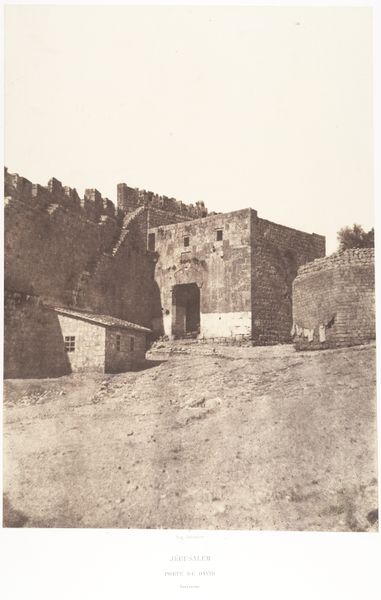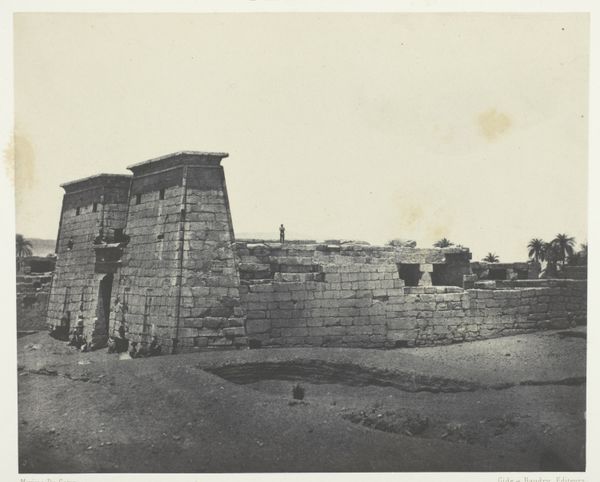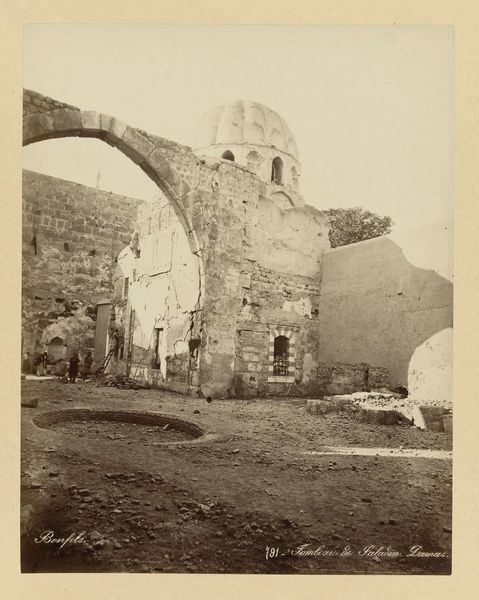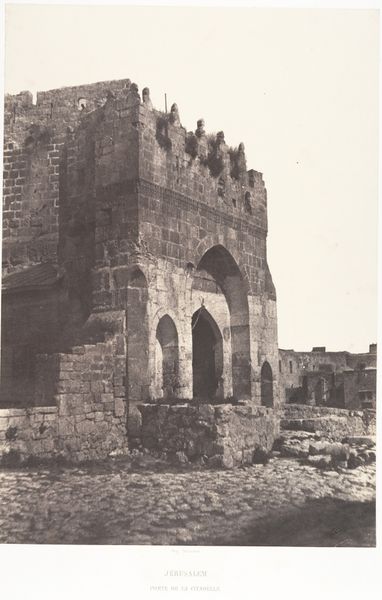
photography, albumen-print
#
landscape
#
photography
#
historical photography
#
arch
#
orientalism
#
19th century
#
cityscape
#
islamic-art
#
albumen-print
Dimensions: height 281 mm, width 224 mm, height 559 mm, width 468 mm
Copyright: Rijks Museum: Open Domain
Curator: The sheer size! It's a behemoth of stone, a fortress silently enduring. You can almost taste the dust and the echoes of centuries just looking at this image. Editor: Exactly, it's an albumen print entitled “Boog van Robinson, Jeruzalem” by Félix Bonfils, dating to sometime between 1867 and 1877. Bonfils was quite the entrepreneur, setting up a commercial photography studio in Beirut. His work reveals so much about photographic materials and Orientalism’s impact at the time. Curator: Entrepreneur, yes, but he captured something melancholic here, I feel. It’s this stillness; those archways almost seem to be holding their breath. I imagine light, blazing and inescapable—Bonfils distilled it into something quiet. It's hard to imagine the daily struggles within these stone walls. Editor: Well, and that silence you describe stems, in part, from Bonfils's chosen method, right? An albumen print on paper involves coating the paper in egg whites! A fairly intense practice if you think about production: procuring eggs, separating whites, coating, exposing…The final image becomes intertwined with the realities of labor. Curator: That's a beautiful thought! Everyday life, bottled into an image like some long-lost genie. When you notice the graveyard leading up to the structure, there’s this real merging of the eternal and temporal. He framed our inevitable end with incredible precision, really. Editor: Precision definitely came at the price of considerable work behind the camera! We mustn’t overlook the chemical processes at play, all reliant on colonial trade networks that allowed such visual records to become widely consumed. Those sepia tones hint at layers beyond a picturesque shot. Curator: Indeed, it feels heavy, grounded by both intention and material. I think it captures history but hints, as any photograph does, about a truth slightly beyond what is depicted, a truth it can never reveal. Editor: It prompts a look back, absolutely. As a medium, photography, as it’s practiced, carries its social fingerprints, literally imprinted in its emulsion. Bonfils' Jerusalem is at once an aesthetic and documentary treasure but always reminding us about its constructed nature through the materials that make it.
Comments
No comments
Be the first to comment and join the conversation on the ultimate creative platform.
